
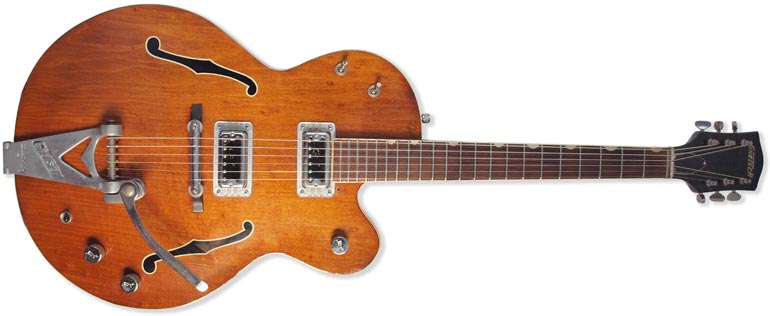
The Gretsch Chet Atkins Tennessean debuted in 1958, and was in production until 1980, but the middle 1960s were very much the peak years in terms of demand for this guitar. In fact the model was the best selling Gretsch of the 1960s. This example hails from 1965, and is a fairly typical example of a mid 60s Tennessean. Despite it's looks, it is in the Dark Cherry Red finish described in literature of the time. It is, of course, very, very faded: an effect of sunlight on the original nitrocellulose finish. A look at the images below show some hints of the original color, most obviously below the pickups . The US list price for this instrument (June 1965) was $350. Have a look at how the Tennessean was described on page 2 of the 1965 Gretsch catalog.
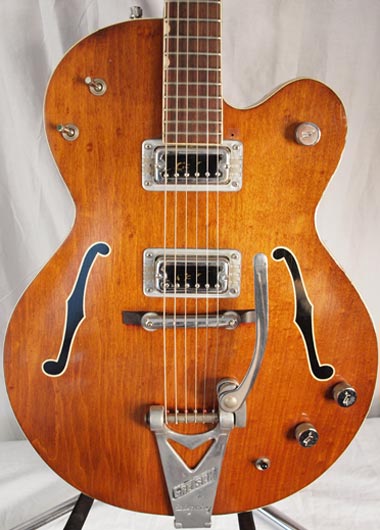
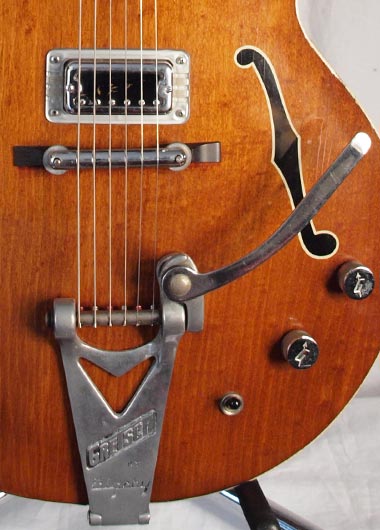
The Tennessean hollow body was maple, notionally 16" wide (though this example is closer to 15 3/4"), and with simulated 'bound' F-holes. Earlier examples had no binding; these were standard from 1962. The controls are as follows. Top bout: pickup selector switch, tone switch; Lower bout: master volume; below bridge: separate neck and bridge pickup volumes, and standby switch. As the least expensive guitar in the Chet Atkins range, it was not fitted with the mute of the 6120 Hollow Body or 6122 Country Gentleman.
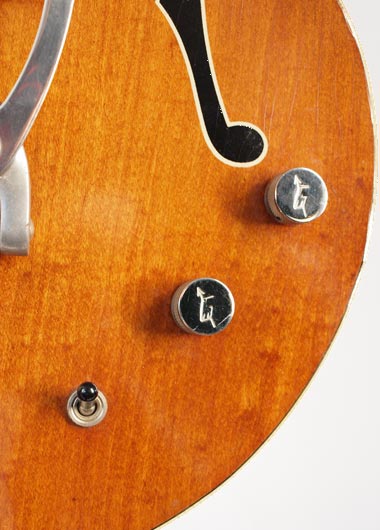
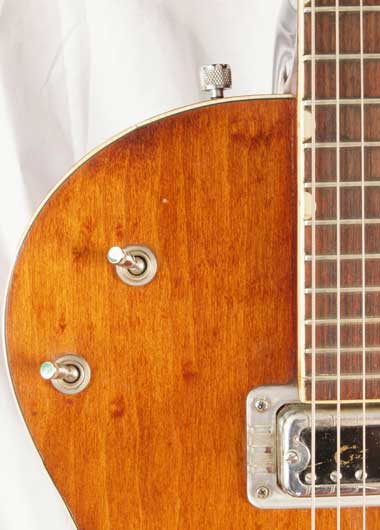
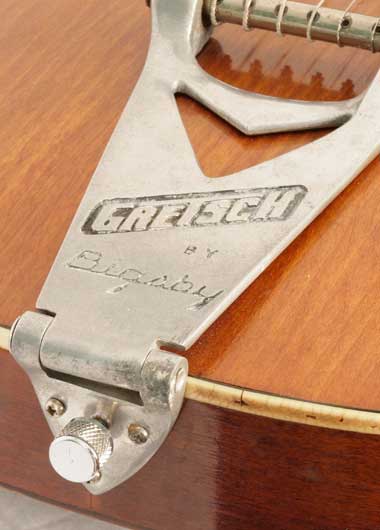
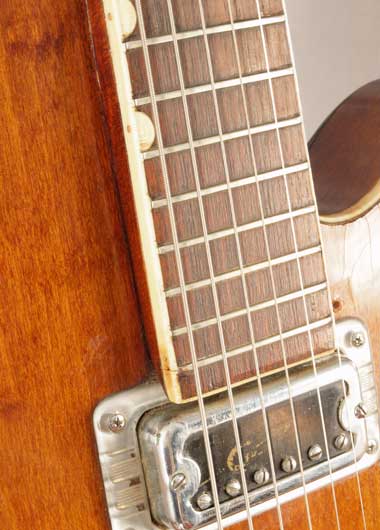
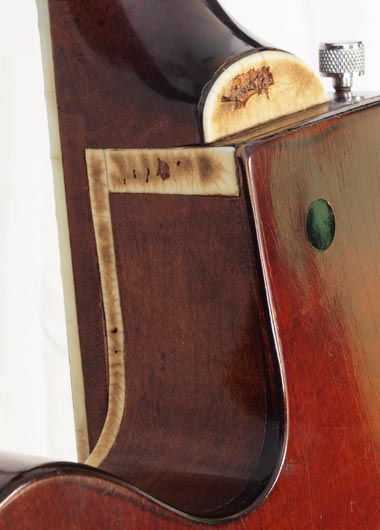
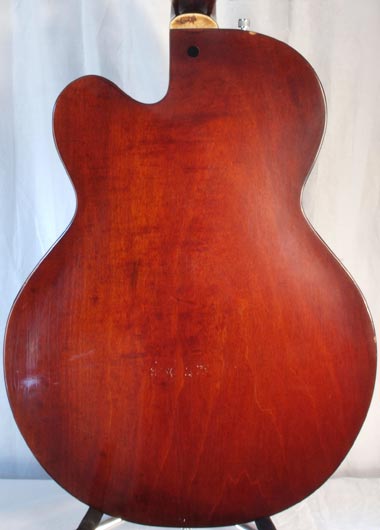
Gretsch guitars, unfortunately, seem to suffer (and more so than other brands), with binding disintegration. It typically crumbles and falls away as can be seen here. It is rather rare, in fact, to find older vintage Gretsch guitars with complete undamaged binding. The Tennessean was bound in single ply cream on the front and neck, including heel cap, though with a subtle single ply black binding on the back body edge. Note the black dot on the reverse of the guitar's heel. This covers a wood cap, which in turn covers a screw going down into the neck. Although the guitar has a set (glued in) neck, Gretsch tended to add a screw holding it all together. Whether this was to keep the neck in place during gluing, or to add additional strength to the joint throughout the guitar's life is unclear. In this instance this screw is located on the body reverse, but they may also be situated on the neck itself, travelling diagonally into the body.
The Tennessean does not have the padded back of the other Chet Atkins hollow body models.
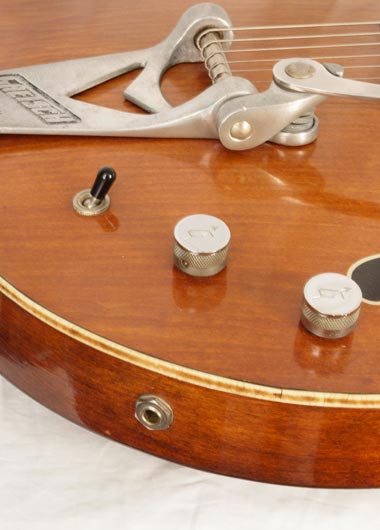
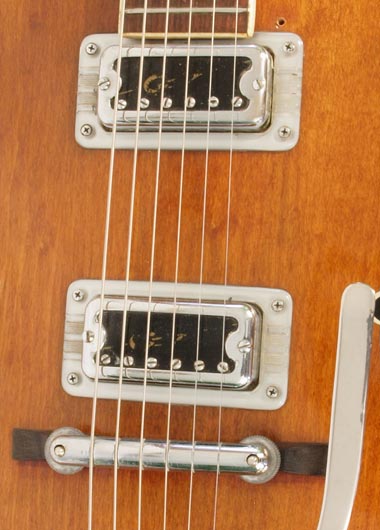
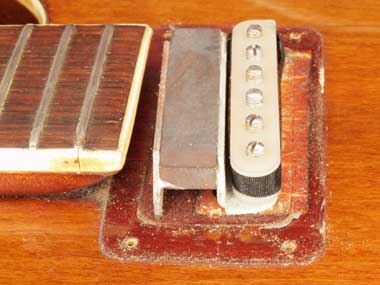
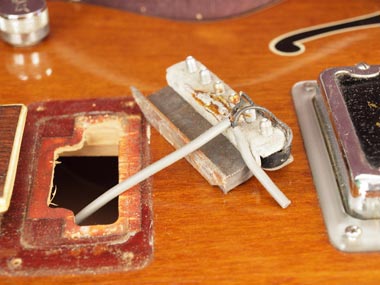
With covers removed, the simplicity of these pickups are obvious. But note the original Dark Cherry Red finish on the body below the pickup. There has been some significant fading to this guitar!
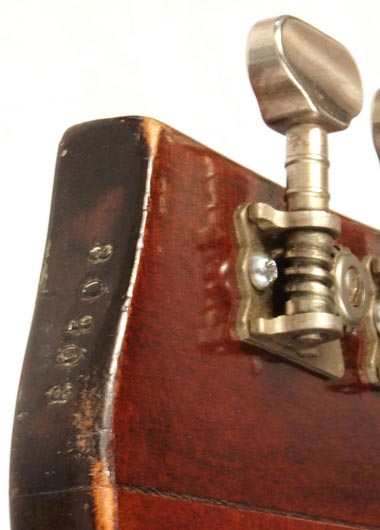
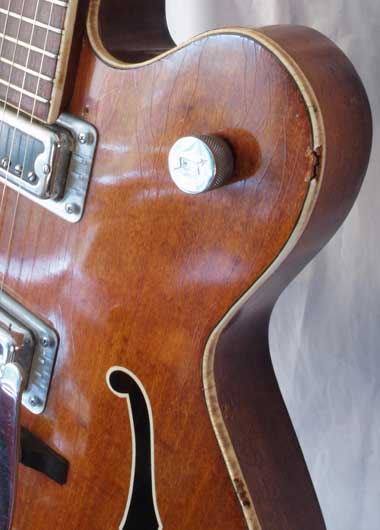
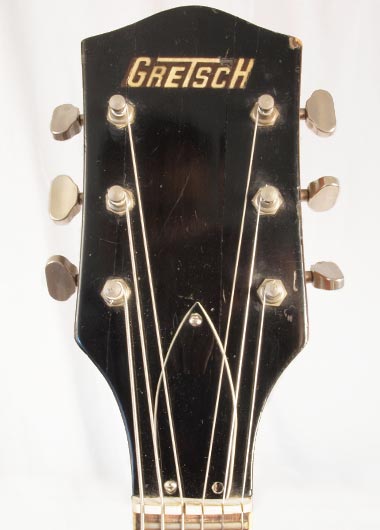
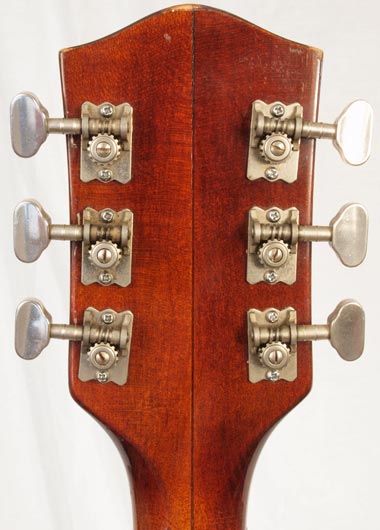
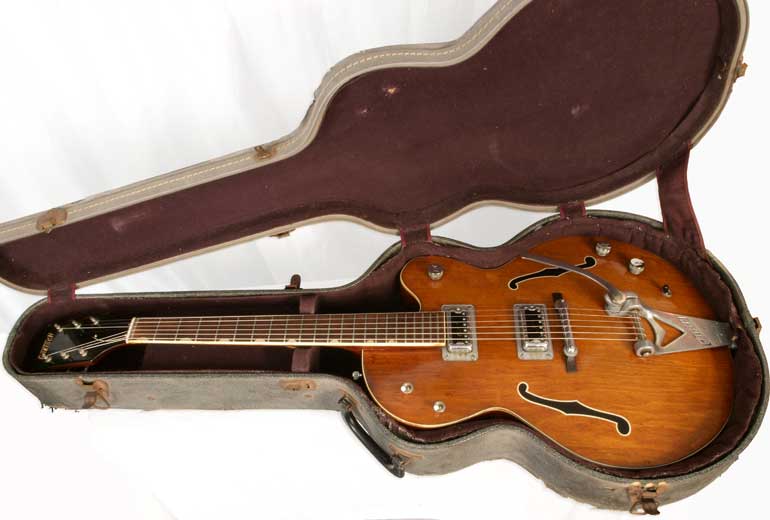
In it's original case.
$1500
$1999
$2200
$2795
$2995
$3950
$4200
$4500
$5795